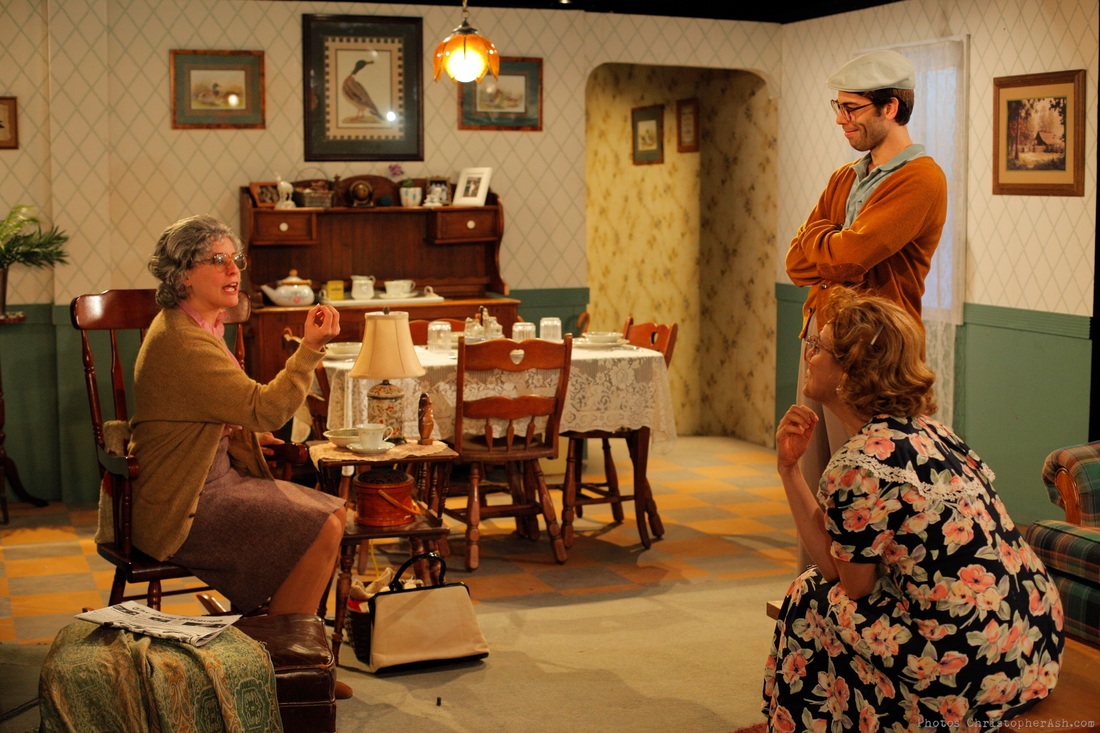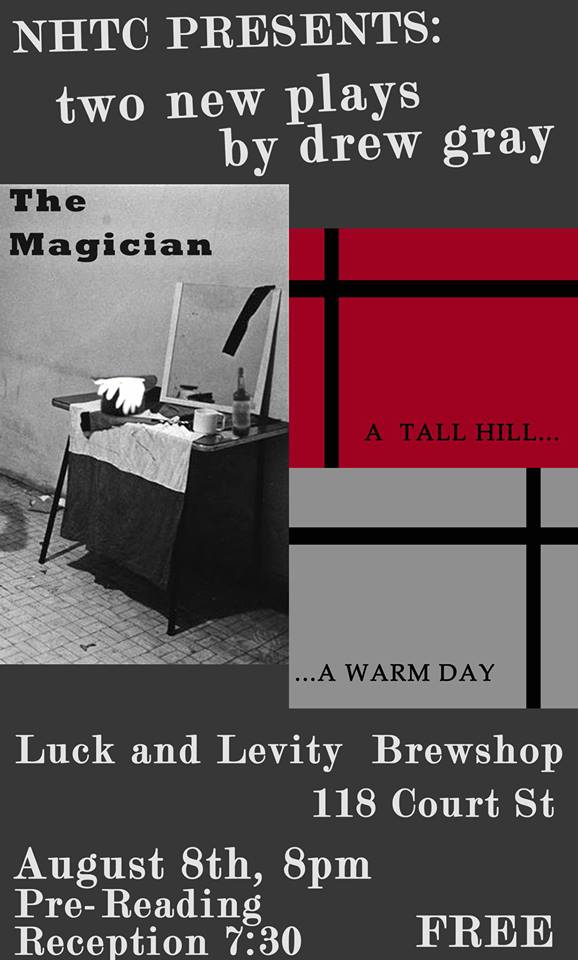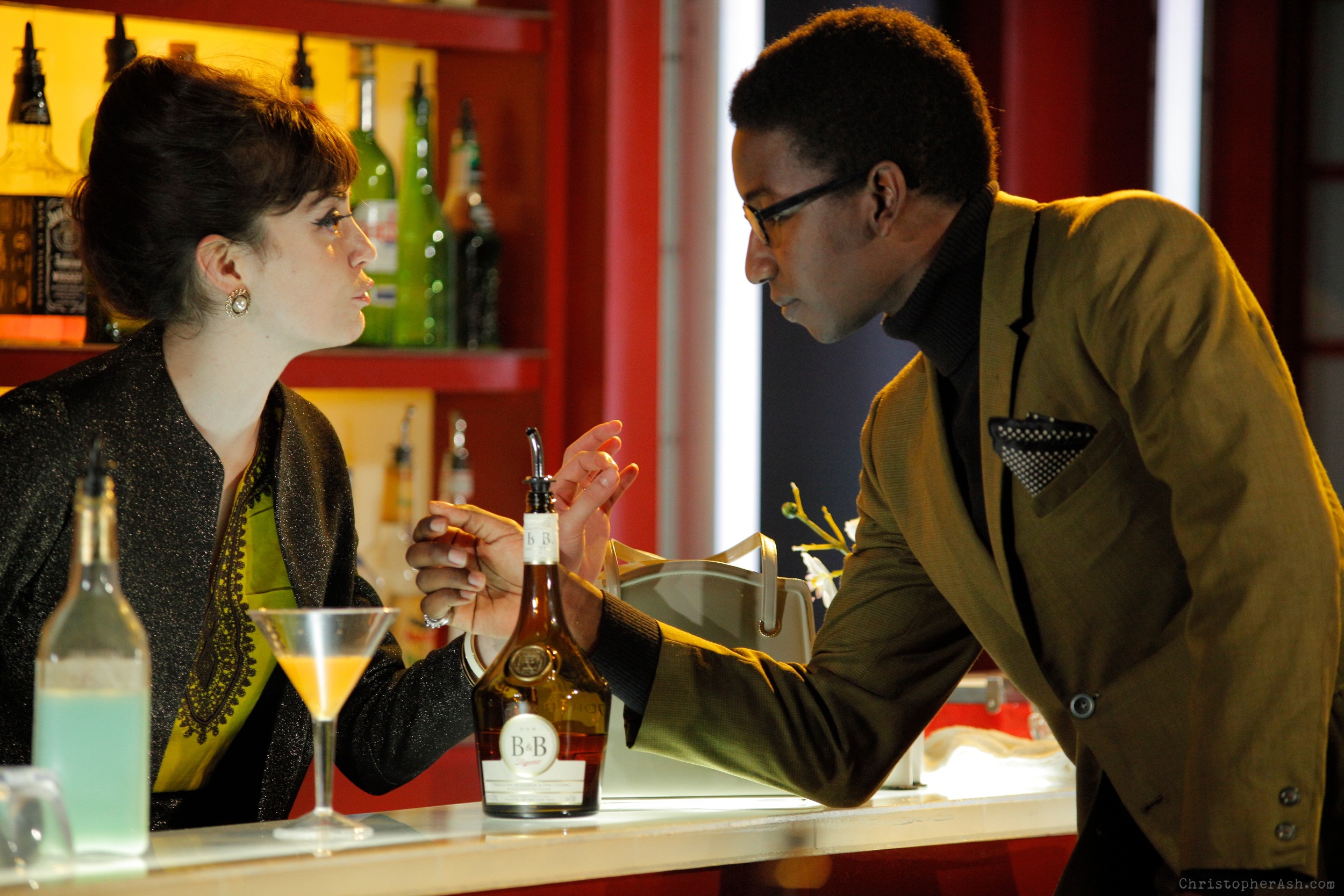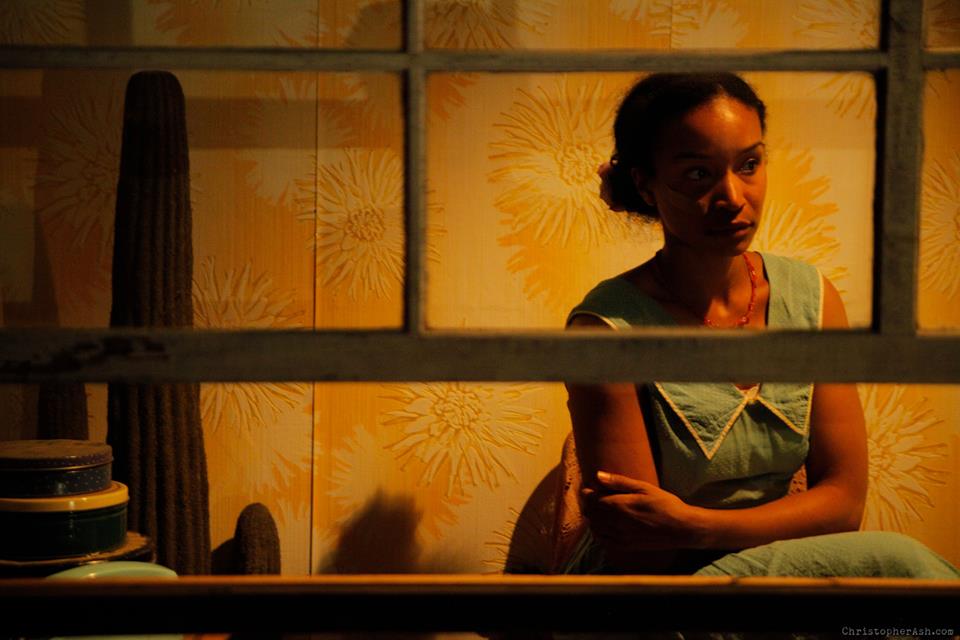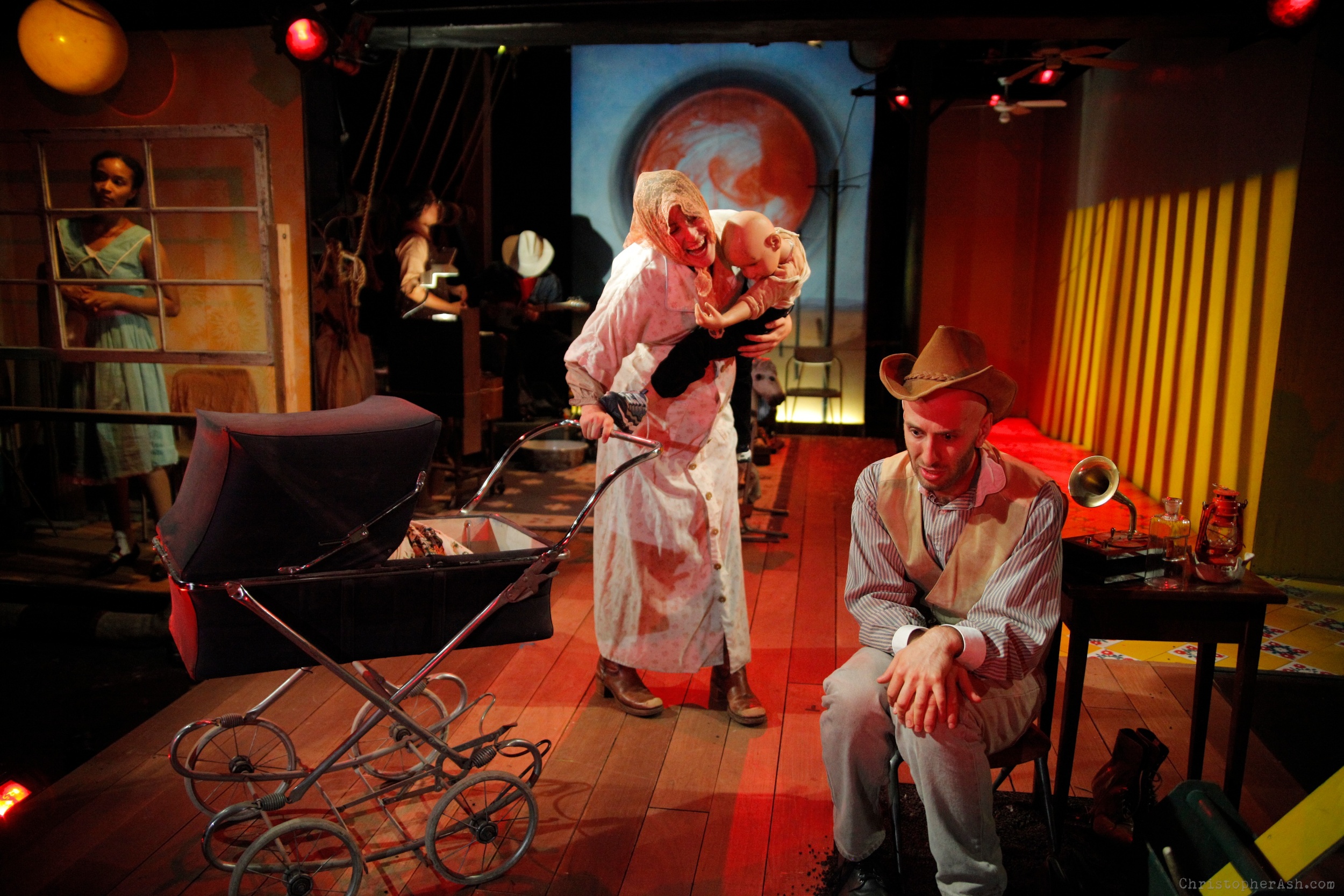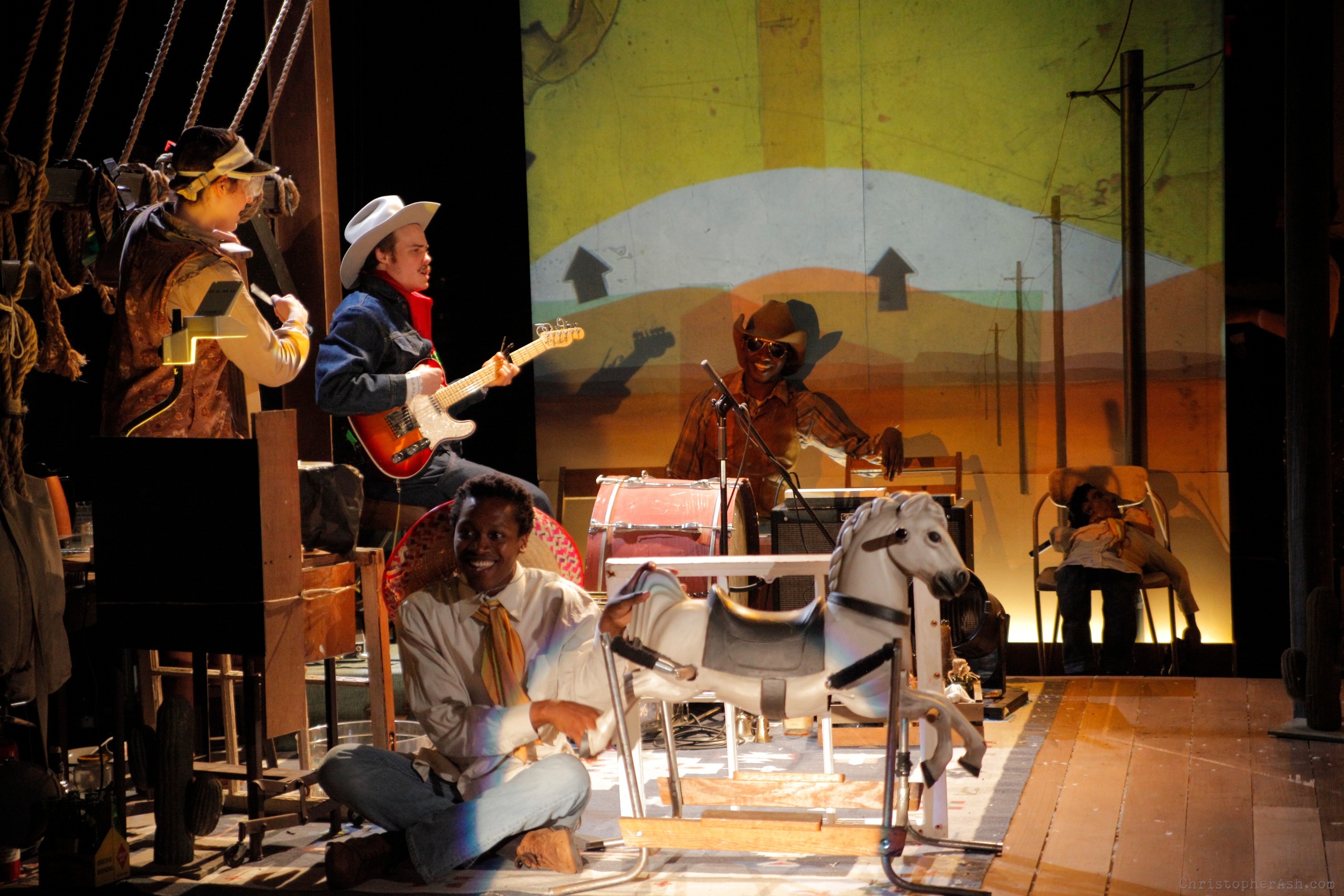Thus far, we’ve posted the first ten of Noah Charney’s ruminations on the stories in his “playlist.” Here is the essay in which Noah announces his intentions and provides the full list; the list includes links to the individual posts as they go up. Professor Charney welcomes comments on his posts, either in our comments section or at his facebook email: noah.charney1@facebook.com -- Eds.
Story Playlist
A short story project amid the renewed interest in short fiction
Noah Charney
Life is short and there is a lot to read. I comfortably finish about thirty books a year, reading for fun, without it feeling like hard work. That means that I might have a good thousand books or so in my future. The quantity of books out there is simply too daunting to consider, with around 300,000 new books self-published only last year, to say nothing of those published by established houses. These numbers are best let wash over you, maybe provoking a momentary sigh of dismay. Clearly, a plan is needed. How best to determine which books to include in the finite number I can read in my lifetime?
I’m interested in the quality books, the must-reads, the “classics:” ancient, old, modern, and contemporary. From Homer to Beowulf, from Chaucer to Boccaccio, from Walpole to Swift, from Twain to Poe, from Joyce to Hemingway, from Carver to Dahl to Murakami, there are canonical authors I’ve never read, or read too quickly, too young, or too little. I’m more interested in experiencing at least one fine text by the great writers, than in covering the pantheon of great books. As a writer, I understand that reading is the best training that I can undertake to improve my own craft. Writing without extensive reading is to exercise a muscle, but without understanding the diverse actions that muscle is capable of. Reading great authors inspires, refuels, energizes, and teaches, as well as adding moves to your repertoire. I would love to read every book of merit that’s ever been published, but the laws of time and biology are against it.
Good thing I’ve come up with a plan.
Recently, a number of high-profile publications, from Esquire to The New York Times, have cautiously celebrated the re-vitalization of short fiction. The year 2012 saw a handful of exciting new short story collections from bankable authors (some best-known for their novels) like Karen Russell (Vampires in the Lemon Grove), Nathan Englander (What We Talk About When We Talk About Anne Frank), George Saunders (Tenth of December), Ron Rash (Nothing Gold Can Stay), and Jess Walter (We Live in Water), to name a few. These collections have been both critically acclaimed and have sold well—a rarity. Short fiction collections often receive praise, but rarely sell anything like novels. The only exceptions are stalwarts of any genre, who happen to publish short fiction collections as well as novels: Stephen King, Elmore Leonard, Joyce Carol Oates, Haruki Murakami. Such authors boast legions of fans who will buy anything they publish, from novels to story collections to dishwasher instruction manuals. The real excitement, emanating from publishers particularly, is that now lesser-known authors, first-time authors, and novelists publishing short story collections for the first time, are all encountering both critical kudos and good sales. The short fiction genre, until recently proclaimed dormant, if not dead, seems to be rising once more.
If that makes short fiction sound like a zombie, that’s not my intention. Perhaps we might rather say that, from a publishing perspective, short fiction was simply comatose for a time. A few decades ago, a short story in The New Yorker, Esquire, Harper’s, Playboy, The Saturday Evening Post, or any of dozens of other magazines could launch a career, or fund a young writer while they wrote their first novel. A promising short story might prompt a publishing house to come calling with an offer of a book contract, based only on the potential shown by that one story. Stephen King off-set his meager income working at an industrial laundry by selling scary short stories to a host of magazines (Cavalier, Moth, Contraband) that no longer exist, just barely supporting his young family, before his first novel, Carrie, made him an international best-seller. Since King’s youth, three things have happened that changed what short stories were capable of, career-wise.
First, most of the literary magazines that once paid a few hundred bucks for a short story have folded, or gone digital, or effectively closed the short fiction arm of their publication. With the Internet Age came a proliferation of good writers who were willing to write for free, in exchange for being published and thereby reaching some imprecise number of readers out there in the digital universe. It is not hard to get short fiction published in a magazine these days, but is nearly impossible to get paid a dime for it. Even the once-mighty short fiction stalwarts, like Esquire and Harper’s, rarely publish short fiction anymore. Only The New Yorker remains a fixture on the short fiction scene, publishing a story prominently in every issue. High-profile venues for individual short stories, therefore, have slowly disappeared, replaced by hundreds, if not thousands, of small-scale online magazines with limited, diffused readership. With so many semi-pro magazines out there, each with a few thousand readers, the chances are slim that any single published story will garner much attention.
Second, short story collections stopped selling well, falling far below novel sales, and often below non-fiction. In response, publishers grew hesitant to release short story collections, unless they were by well-established authors. The collections they did publish were not given the benefit of muscular publicity and marketing schemes, which means they were doomed from the outset (it’s no secret that the amount publishers invest in marketing largely determines which books sell well). In the Internet Age, young authors were encouraged to focus on novels, as short fiction would not pay the bills or spark renown, either singly in magazines, or gathered in story collections.
Third, especially in the first decade of the twenty-first century, publishers determined that readers wanted a lot of book for their money, and so began to favor longer novels, or fatter-looking normal-length novels. I have a copy of Daniel Silva’s The Defector that is the size of a concrete block, but which appears to have been printed in size 16 font, triple-spaced. I read it in two days, and suddenly felt like a speed-reading wizard—another intention of the publishers. You feel accomplished, and eager to jump into the next book, when you quickly finish a big book, even if its length is padded-out. Doorstop novels proliferated, and when short story collections were published, they were usually “Complete Works,” in order to make them as large and long as possible. None of these three factors encouraged the writing or sale of short stories, or the publishing of first collections.
This state of affairs may be changing, and this very season feels indicative of a renewed interest in the short story. This is due to two primary, linked factors. Alas, magazines have not suddenly renewed their focus on short fiction, nor have they begun to pay for it. A single short story is still unlikely to win a young author their first book deal. But the eBook era, coupled with our collectively shorter attention spans in the face of the number of distractions that vie for our limited attention, means that short stories can now thrive once more.
With so many digital gadgets and apps and TV programs and newspapers and magazines competing for the spare half-hour we might have to ourselves, on the train, waiting in line, relaxing in bed, we have become skittish of longer commitments of time. This even manifests itself in article length. We have a new term, “long reads,” for proper feature articles of longer than 2,000 words. As a writer for magazines myself, I know that the preferred article length for online consumption is a measly 800 words, while even print magazines are hesitant to ask for more than 2,000 words, with a 1,200 word cap fairly standard. This means that readers are happy to commit to an 800 word article, but are less inclined to tackle anything much longer. Because magazine and newspaper editors think we want this, we have been trained to want it—I now set aside the longer feature articles in my Sunday New York Times, preferring to browse the shorter pieces. Enough ink has been spilled about shortening attention spans, blamed on quick-cut editing in television, bite-sized videos on YouTube, and so on, but how can a possibly alarming decline in tolerance for long-form reading help writers?
It may re-invigorate the short story. While we might hesitate to commit to reading a 400-or, god forbid, 600-page novel, we can reasonably expect to finish a short story in one sitting. The payoff is different of course, approaching the last line of a 10-page story versus a 600-page novel, but that sense of accomplishment, completion, satisfaction is similar—it’s a high that avid readers might equate with crossing the finish line—whether marathon or sprint. We feel accomplished, our time well-spent, happy that we can check another box on our to-do list. Book publishers recognize this, the appeal of completion, and have responded by offering “singles.” Publishers like The Atavist and Byliner specialize in nonfiction that takes less than 90 minutes to read. Kindle’s eBook Singles series follows a similar pattern for fiction, publishing individual works that are halfway between a long short story and a novella (all under 120 pages in length, the general cut-off separating novel and novella). The short story, like the mini-essay, becomes a vehicle for a single purpose, idea, or turning point. It is like a lyric poem to an epic poem: it sustains, over a shorter period of time, with perhaps more intensity, a finite world, concept, thought. Even its more complex and riddle-bound embodiments (like the puzzle-box stories of John O’Hara, each one of which begs for a book group to pick it apart) feel digestible, at once satisfying and easy-to-commit-to. A great burger, as opposed to a 15-course tasting menu.
The second factor that has propelled the growth of the short is the ability to buy digitally—instantly and cheaply—and download directly to a reading device. Printing costs for an ultra-thin book of 40 pages are not much less than printing a book of 200 pages, but a publisher could not get away with charging for the short work anything like what they can for a 200-pager. Such a tiny printed book would feel wastefully slender, an unsatisfying hankie of text. With eBooks, however, the length is immaterial—when we download something, the file looks just like any other. We also have the illusion that we haven’t paid for it, since our credit card info is already loaded into our Amazon or iBookstore account, and we simply click a button to purchase and receive the digital book on our reader.
The costs for these “singles” are small, usually a dollar or two, so they are as easy to buy as a track on iTunes. Short stories may begin to have the appeal of hit songs. You could buy the whole album for a more substantial price, but that may be more than you’d care to commit to. You can instead buy only the tracks you want, for 99 cents each, and then create your own playlist. You lose out on the feel of the album as a whole, but relatively few bands bother any more creating albums meant to be listened to all the way through, in one sitting, to convey a complete thought or idea. The era spawned by The Beatles’ Sgt. Pepper is coming to an end, and there aren’t many in the vein of Bruce Springsteen’s Nebraska, Neil Young’s Harvest Moon, U2’s Achtung Baby, and David Bowie’s Ziggy Stardust these days. Most albums are assemblages of individual songs, and can be sold as constituent parts. Even if the artist feels differently, the consumer can access work piecemeal, creating personal playlists. Such freedom of selection might inspire the desire for do-it-yourself short story collections.
We have not yet reached the stage when Amazon will offer the purchase of George Saunders’ new story collection either as individual stories, at 99 cents each, or the whole thing for $20, but surely that is on the horizon. And it may not be a bad thing. Story collections, like albums, are rarely complete thoughts, necessary to read from cover to cover, in the order presented. The beauty of each story is that it is, in itself, a complete thought, a faceted gem in your palm. Collections are at their best when they are coherent, but most are simply a collection of individual stories, often first published elsewhere, and often written over many years, with no concept or character that links them together.
These observations led me to the idea of a short story playlist.
In 2011, I read twenty-seven books. I considered that a pretty fair number, a bit less than one a fortnight (a book every thirteen days, if you’re keeping score). Last year I was determined to better that record, aiming for thirty—I ended up with thirty-eight (a book every 9.6 days), and felt pretty darn good. Not being in the least obsessive, I keep a tally in the back of my Moleskine datebook, a manual journal to which I stubbornly and lovingly cling, despite my various iApparati.
I read more than your average American: about ten times more. One in four Americans read zero books last year, and the average American read three. Three books a year may seem like very little, but with Americans watching an average of 28 hours of television a week, or 14,560 hours per year, who has time for books?
Despite being well ahead of my fellow citizens, I feel under-read, particularly when it comes to the “great authors.” I love reading, but what I love even more is finishing what I read—getting to the end. The act of getting to the last page, drinking in that often memorable or explosive final sentence gives many of us a visceral pleasure. Which is where short fiction comes in. Despite other commitments, distractions and, occasionally, boredom, we know we can get to the end, without feeling that we must commit ourselves to days or weeks, when the siren song of thousands of new articles, songs, videos, TV shows, films and, dare I mention, real-life friends and experiences also shout for our attention.
Combining my wish to read more authors in order to become a better writer myself; to finish more texts, and enjoy that high of completion; to investigate what happened to the short story, why it seems to be making a comeback, and how 21st century reading habits can help it to thrive, we come to my Story Project.
I will read a short story each day, for a month. I will read the story at night and then, the following morning, re-read it and write a short essay about the experience—being sure to stay within the magical 800-1200 words of today’s online attention span. I will comment on what I liked or disliked about the story, why it and its author are worth reading, what makes the story and/or its author unique and, most importantly for me, what I learned as a writer by reading it. I’m approaching this as a month-long master class in fiction, in which I will learn at the feet of fellow writers who all happen to be masters of short fiction. At the end of the month, I will focus my collected thoughts and lessons into a longer article (a “long read”), reflecting on the experience, and what I learned about the short story as a genre, one that seems poised for a renaissance.
But I don’t plan to stop there. As this is the story of a writer reading stories to learn how to write better stories, its natural conclusion would be for me, after ingesting 30 great stories by 30 fine writers, to put what I’ve learned into practice. I will write my own short story, the first I’ve written in years, to bring my Story Project to its natural climax. This story will be published, along with an analysis essay: talking through my decisions, and why I wrote the story as I did, in the vein of a DVD with a “director’s commentary” feature.
How did I assemble my playlist of 30 short stories? I’m an old hand at learning from fellow writers. For the past year, I’ve written a weekly series for The Daily Beast called “How I Write.” Each column is an interview with a writer I admire, with unusual, odd-ball, and targeted questions about the writing life and writing techniques, tricks of the trade, likes and dislikes, behaviors and quirks. Many of these authors have since become friends, and it’s great to swap stories with them about life in the writing trenches. My original all-inclusive list of short stories was based on recommendations by my fellow authors (who were universally thrilled by the project, and eager to recommend unusual stories I might not otherwise consider), tips from English professors, and a large helping of the universally-acclaimed “classics” of the genre—the kind of stories that appear in numerous collections, and are mandatory reading in many literature classes and writing classes. In order to keep the list length reasonable, I’ve only considered stories originally written in English. No story can be more than 50 pages in length. I have personal preferences, too. I like stories with a sense of creeping dread that urges you to read on. This doesn’t mean, necessarily, horror stories or thrillers, but those tend to be my favorites, so I lean toward suspenseful stories, regardless of genre. My goal is to quickly expand the number of authors whose work I’ve read, but also to juxtapose a wide variety of writing styles side-by-side, read on consecutive days, so that the memories are fresh. While I will read them in chronological order of publication, I will be looking for ways to arrange the list according to other criteria, as one does with a playlist or—and I’m dating myself here—a “mix tape.”
My initial list was around sixty stories long. That’s two months’ of reading—not a lot, but my concept for the Story Project is one month, so I had to trim. Some of the stories I’d read before, but, as exemplars of the genre, are worth re-reading specifically for the project. The scariest thing I’ve ever read is H. P. Lovecraft’s “The Colour Out of Space.” Yes, it’s over-written and, yes, the idea of an alien color pattern floating in the air doesn’t sound particularly horrifying, but just thinking about it gives me a pleasurable sense of heebie-jeebies. The second-scariest thing I’ve ever read is Stephen King’s “Children of the Corn,” but it strikes me as a clean act of horror alone, whereas the story I prefer to include in my list, “One For the Road,” is not only frightening but is also far more literary, with the feel of a centuries-old folktale, but one which Carl Jung could write a dissertation on, with this curdling moment when a father, who ran for help when the family car was stopped in a snowstorm, submits to his familial instincts and rushes to help his wife and children, though we know that they have become vampires, glowing eyes in the snowbound darkness. These two stories are included in my list because one informs the other. By gathering “singles” that respond to one another, either actively or through the eyes of a modern reader in the midst of a project like this, I hope to learn more from the collectivity of the story “playlist” than I could reading each “single” alone.
With assistance from the editors of the New Haven Review, I’ve come up with the following list:
1. Ambrose Bierce “An Occurrence at Owl Creek Bridge”
2. Nathaniel Hawthorne “The Minister’s Black Veil”
3. Mark Twain “The Celebrated Jumping Frog of Calaveras County”
4. Edgar Allan Poe “Fall of the House of Usher”
5. Washington Irving “The Legend of Sleepy Hollow”
6. Rudyard Kipling “Rikki-Tikki-Tavi”
7. F. Scott Fitzgerald “The Curious Case of Benjamin Button”
8. W. W. Jacobs “The Monkey’s Paw”
9. H. P. Lovecraft “The Color Out of Space”
10. Edith Wharton “Roman Fever”
11. William Faulkner “A Rose for Emily”
12. James Joyce “The Dead”
13. Ernest Hemingway “Baby Shoes”
14. Charlotte Perkins Gilman “The Yellow Wallpaper”
15. John Cheever “Reunion”
16. John O’Hara “Good Samaritan” ["Graven Image"]
17. James Thurber “The Secret Life of Walter Mitty”
18. Flannery O’Connor “A Good Man is Hard to Find”
19. Raymond Carver “Cathedral”
20. Shirley Jackson “The Lottery”
21. O. Henry “The Gift of the Magi”
22. Isaac Asimov “Little Lost Robot”
23. Roald Dahl “Man from the South”
24. J. D. Salinger “A Perfect Day for Bananafish”
25. Joyce Carol Oates “Where are You Going, Where Have You Been?”
26. Stephen Millhauser “Eisenheim the Illusionist”
27. Woody Allen “The Whore of Mensa”
28. Annie Proulx “Brokeback Mountain”
29. Stephen King “One for the Road”
30. Nathan Englander “Free Fruit for Young Widows”
I’ve read, at some point, nine of those thirty. Those that I’ve read were largely assigned in high school or college (Jackson’s “The Lottery” being the poster-child of high school assignments), and I’m curious to revisit them as an adult, and as a professional writer, to see what all the fuss was about. Englander’s “Free Fruit for Young Widows” stupefied me when I read it in The New Yorker. I hadn’t even planned to read it through—I was just browsing the magazine, scanned the first paragraph, and was drawn into its vortex of wonderfulness. I’m curious as to whether I can identify its roots, if I read it last, after twenty-nine other, older “greats.” I know Roald Dahl from his children’s books, but I’ve heard how creepy his grown-up fiction can be, and I’m curious to try him out for this reason. Other stories were recommended by fellow writers or professors and represent a playlist that I feel will be cohesive, even if it is heavy on my personal preference for tales of horror, suspense, and creeping dread.
This is by no means definitive—it’s just the thirty that have been selected for this particular project. I’d welcome suggestions as to what else should be on the list, or what I should read, once this initial project is done. This list is only in chronological order—lining up my “playlist” of short stories is something that can only be properly done once they’ve all been read. The result will be a more coherent list, somewhere between a college syllabus and those carefully-curated mix tapes we used to make for potential sweethearts back in the Bronze Age of cassettes and high school crushes. The later ordering of the stories will provide form and lucidity to a list that could seem haphazard. If we imagine this playlist of stories as its own collection, readable and even publishable as a unit, then its order is paramount to our bringing an assemblage of “singles” and making of them a rational album—which I think the best story collections do. Having only read a few of the listed stories ahead of time, those I particularly wish to revisit will, I expect, be enlightened and will enlighten other stories that they influenced or were influenced by. There would be no Lovecraft without Poe, and no Stephen King without both past practitioners of the art of literary horror. “A Good Man is Hard To Find” and “Cathedral” inspired just about every short story writer to come after them. The most recent of the stories, “Free Fruit for Young Widows” should reflect the stainedglass light of all of the previous stories, as Englander is a voracious reader and student of his art form.
The New Haven Review will post my response essays to each story on its blog, and publish the final article at the end of the project, with my reflections on the experience. The resulting short story that I will write myself, and its accompanying director’s commentary, will be published later, as an eBook single.
I’d love for you to join me, and read along with the stories I cover, to send comments, and to make suggestions on the NHR blog. In the end, I hope that this Story Project will both satisfy my desire to read more authors, and help fuel the renewed interest in short fiction in general, while also suggesting the values and limitations of short-form fiction.
